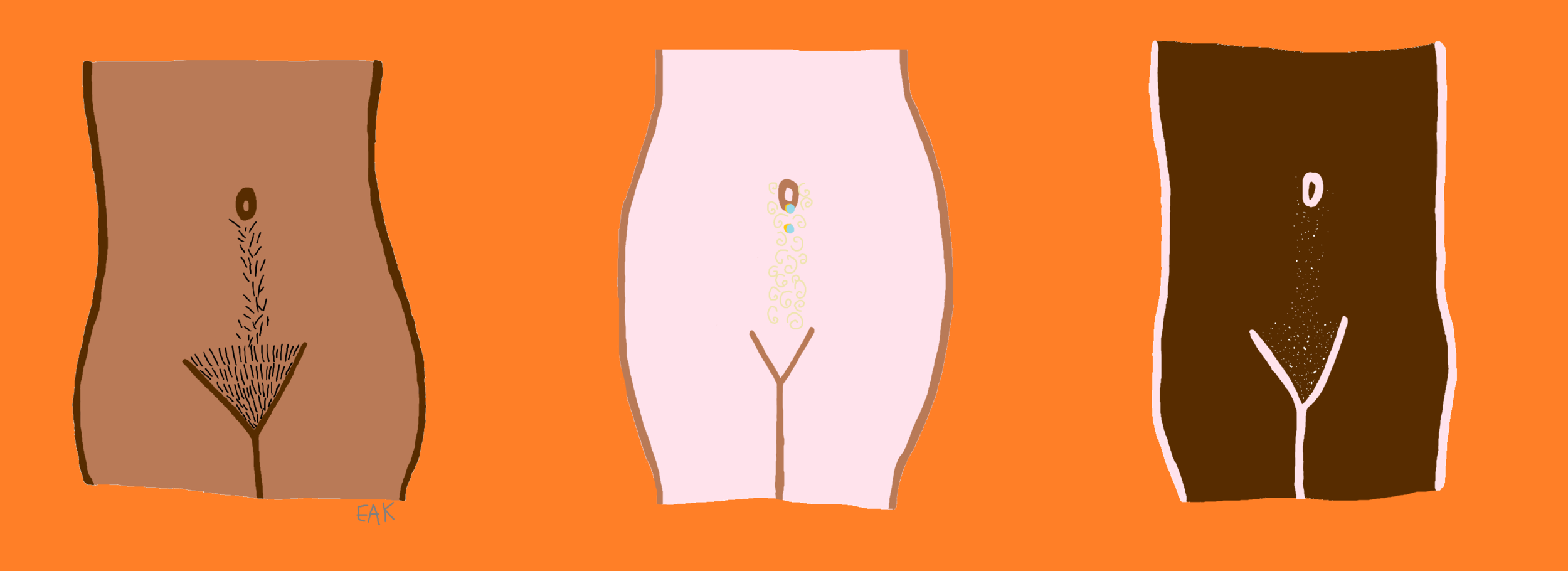WRITTEN BY A MEMBER OF SCHOOL OF SEXUALITY EDUCATION’S BRILLIANT YOUTH ADVISORY PANEL (YAP).
Breeanne, aged 17, England.
I first learned about my vagina when I was nine years old. A lesson focusing on puberty explained to me that ‘this is where you bleed from’ and….that’s about it. Further education tended to focus on the internal reproductive organs so I was forced to jump to my own conclusions about vaginas. Encouraged by the wealth of (usually incorrect) information that is available on the internet, I discovered many ‘facts’ that are actually just myths.
This is an experience I am sure all people will be able to relate to. Maybe no one ever taught you the difference between a vulva and vagina or maybe you’re terrified that ‘too much sex’ will cause your vagina to become ‘loose.’ Below are seven common myths about vaginas and the actual truth behind them.
Myth #1: ‘Vagina’ is the correct term to describe the entire external genitalia.
It has become commonplace to use the term vagina to describe all external genitalia despite this being anatomically incorrect. The vagina is one part of what is collectively known as the vulva, the external genitalia that include the mons pubis, urethral opening, labia, clitoris, vaginal opening and perineum. It’s unclear exactly why ‘vagina’ has been adopted as the word of choice when referring to the genitalia but it may be linked to the prominent presence of men in the history of anatomy. Andreas Vesalius (author of ‘On the Fabric of the Human Body’ - a book regarded as one of the most influential works on anatomy) viewed the clitoris as something abnormal; a view that was shared by many other male scientists throughout history (Galen, for example, believed the vagina was an inside-out penis!). Although our understanding of anatomy has improved, the impact of these beliefs still linger in society. It is important to use ‘vulva’ when describing the entire external genitalia so people are able to develop better understanding of their own sexual and reproductive health.
Myth #2: All women have vaginas.
‘It’s a girl!’ the midwife exclaimed after looking at the baby’s genitals and deciding they fit the textbook description of female genitalia. Due to misconceptions surrounding sex and gender we often automatically assume that if you’re a woman you must have a vagina. However, genitalia is not an indicator of gender and assuming so erases the existence of intersex people, trans and non-binary people.
Neither gender nor sex are binary and women can have many different types of genitalia (vulvas, penises or other variants in sex characteristics). We must move on from this myth in order to create a safer and more inclusive environment for everyone. I’d recommend checking out School of Sexuality Education’s blog post ‘Why is everyone being mean to JK Rowling?’ for more information on this topic.
Myth #3: Vaginal penetration is always painful.
Sex should be enjoyable for everyone and if sex is causing you discomfort or pain, you can stop. Painful penetration is not something you need to put up with but if you do find vaginal penetration painful this could be linked to a number of things. Using good quality lube and making sure you’re fully in the mood can really help but there are also medical reasons that penetration can be painful, including infections or conditions like vaginismus. If you are finding penetration painful and this is persistent you should get checked out by a doctor.
‘Pleasure’ is not a word that is often included when talking about the sexual experiences of people with vaginas and vulvas. As School of Sexuality Education rightly point out , in the UK government’s new Relationship and Sex Education guidance the word ‘pleasure’ is not mentioned once. This lack of discussion can lead to people assuming that vaginal penetration is always painful, a sentiment that is harmful as it assumes that is OK for sex to be unenjoyable as well as diminishing the experiences of people who experience medical conditions.
Myth #4: Penetrative sex will cause your vagina to become ‘loose.’
The myth that the more sex you have the looser your vagina will become has been used to shame people for having multiple sexual partners for years. The vagina is very elastic so having something temporarily penetrate it will generally not cause permanent changes in the size of the vaginal opening. Vaginas can lose elasticity as people age and that’s completely normal! They may also change shape after childbirth which is why menstrual cups often come in different sizes for people who have and haven’t had a vaginal birth. However, the vaginal opening can also tighten after menopause due to a decrease in oestrogen levels. So, really, the shape and elasticity of your vaginal opening will change over your lifetime regardless of how much or little penetrative sex you have! Ultimately, it’s important to remember that all bodies are different and that they will change differently too!
Myth #5: The ‘hymen’ can show if someone has had penetrative sex.
Last year, rapper T.I received backlash over comments he made on a podcast where he stated that he’s certain his 18-year-old daughter hasn’t had sex as “we have yearly trips to the gynaecologist to check her hymen.” Besides this being an extreme invasion of bodily autonomy, it also reinforces the harmful ‘popping the cherry’ myth in which it is believed that those with vaginas should bleed the first time they have penetrative sex due to the breaking of the ‘hymen.’ First, we should start by addressing what the ‘hymen’ actually is. The ‘hymen’ or vaginal corona is made of a thin piece of tissue located at the opening of the vagina. In most cases, the hymen does not completely cover the opening of the vagina (otherwise how would period blood get out?!) and the amount and thickness of hymenal tissue can vary from person to person. In rare cases, the hymen covers the entire vaginal opening. This is called an imperforate or microperforate hymen and requires medical attention. This myth probably comes from the fact that sometimes the hymen can be stretched the first time someone has penetrative sex which may cause pain or bleeding. However, there are many other reasons your hymen may stretch, including riding a bike or playing sports. It is therefore impossible to tell whether or not someone has had sex simply from looking at their hymen.
Myth #6: Vaginal discharge is a sign something’s wrong.
Discharge is a completely normal part of having a vagina and it’s actually pretty brilliant! The cervix naturally produces a fluid that is designed to help keep the vagina clean, moist and free from infection. Generally, normal discharge doesn’t have a strong odour or smell, is clear or white and is thick and sticky or slippery and wet.
It is important to note that the appearance and amount of discharge can change throughout your menstrual cycle as well as if you are pregnant or sexually active. Although vaginal discharge is very normal, changes to it can be a sign of infection. If you experience any changes to your discharge that aren’t normal for you, you should go see your doctor.
Myth #7: Douching is the most effective way to clean your vagina.
With endorsement from celebrities and criticism from healthcare professionals, douching has become a hot topic of conversation in recent years. It is fundamentally a process that involves flushing the vagina with fluid in order to clear it of vaginal secretions (i.e. the all important aforementioned discharge) and is one that is deeply rooted in sexism. Douching was historically used as contraception (NB: douching will definitely not prevent pregnancy) until the widespread availability of the contraceptive pill knocked it from its podium.
Companies therefore turned to shaming women for being ‘unclean’ and suggested that, without douching, they would not be deemed ‘sexually ideal’ by their husbands. Insecurities were preyed on, sales rose and douching placed itself firmly in society. The problem with vaginal douching is that it can disrupt the healthy bacteria and pH levels in your vagina, potentially leading to a whole host of health problems including bacterial vaginosis, vaginal irritation or dryness and pelvic inflammatory disease. It is recommended that the most effective way to clean your vagina is to let it clean itself (which it does resulting in discharge). Washing the vulva with warm water only during a bath or shower is the best way to keep the vulva and vagina's healthy balance of bacteria and pH levels.
Ultimately, understanding vulvas, vaginas and the myths surrounding them is important! Although education has improved in recent years, there will always be myths floating around. Make sure to consider where you are getting your information from and check reputable resources!
Illustrations by Evie Karkera, unless otherwise credited.
Our book ‘Sex Ed: An Inclusive Teenage Guide to Sex and Relationships’ is out now.



